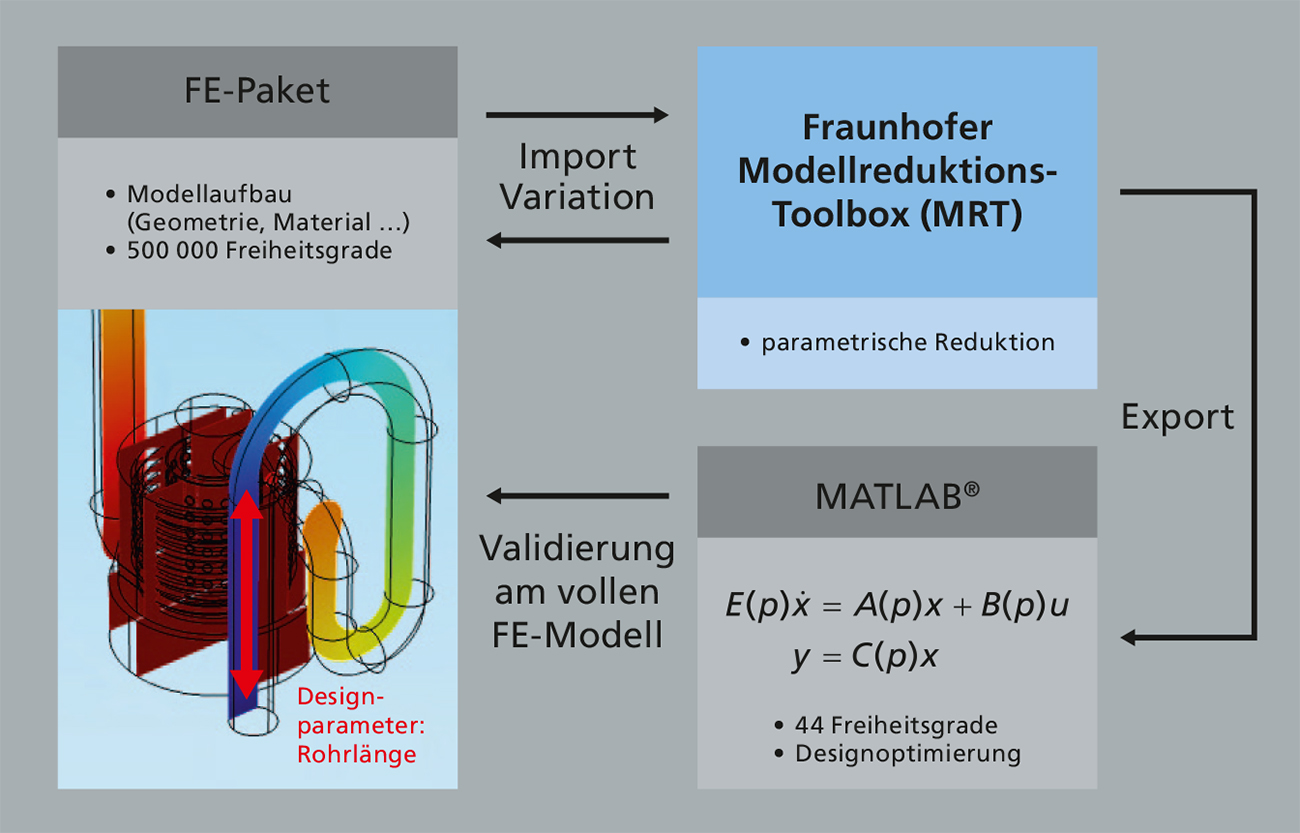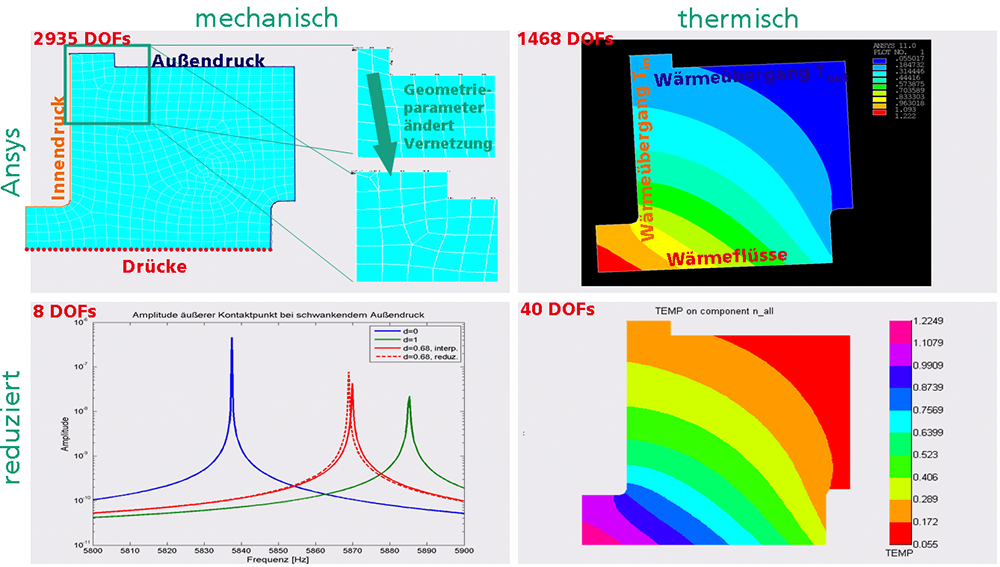

Designing machines or plants on basis of simulation, different physical effects from structural mechanics, acoustics, heat transfer, electronics etc. have to be considered on different levels of detail.
In order to predict accurately how device properties change with geometry or material parameters we need a description by partial differential equations, which are treated numerically by finite element packages like ANSYS or COMSOL and lead to large systems of equations with hundreds of thousands of degrees of freedom.
On the other hand, solving typical design tasks like shape optimization, sensitivity analysis, or parameter identification for a collection of components this approach is by far too expensive. Here, the developer needs small state space models with not more than a few hundred degrees of freedom which reproduce the i/o behavior of the full FE-models sufficiently well. On this level of abstraction system simulators like MATLAB/SIMULINK are used.
Goal: Building Bridges
The goal of the project was to develop a software (Model Reduction Toolbox) which bridges the gap between these two worlds by providing means to import and reduce FE-models in a simple and automated way and to use these models within a system simulator. The project was focused on parametric model reduction.
If the original FE-model depends on some design parameters, e.g. the length of a pipe, then this parameter can still be changed in the reduced model. In particular, we avoid rebuilding a reduced model from the original FE-model for each set of new parameters. This is the essential advantage within a parametric study or optimization.
The concept of matrix matching developed at Fraunhofer ITWM may be applied even to FE-models the mesh topology of which changes with the parameters. Reduced model can be coupled even though contact faces are meshed differently.
Type of Project: publicly founded project
Project Partner: Stiftung Rheinland-Pfalz für Innovation
